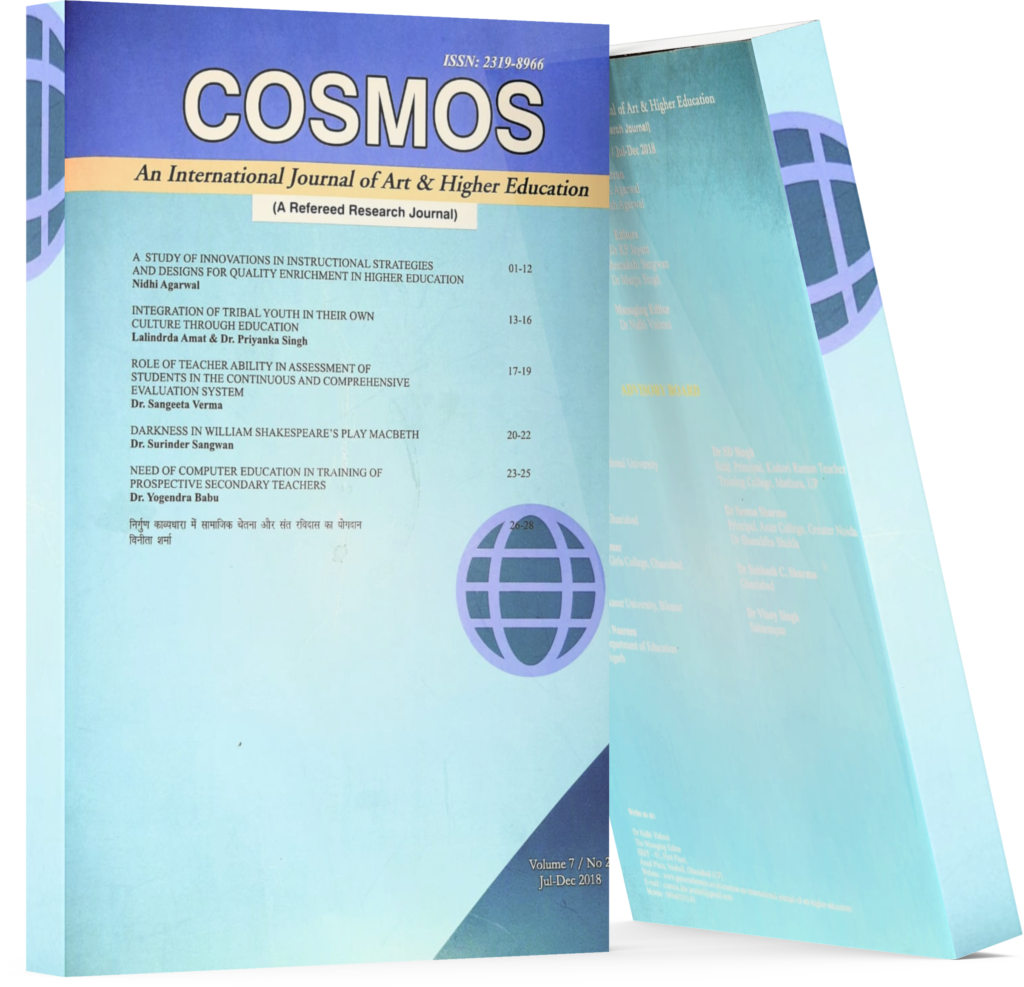The Strength Of The React (Relating-Experiencing Applying-Cooperating- Transferring) Teaching Strategy In A Contextualized Grade 8 Science Spiral Curriculum Class
Keywords:
Extreme Group Approach, Quasi Experiment, Action Research, Science EducationAbstract
This quasi-experiment was designed to determine the strength of the REACT Teaching Strategy, vis-a-vis a Contextualized Grade 8 Science Spiral Curriculum. It was intended to drive students toward pragmatic meaning-making, leading them towards being society’s problem-solvers and critical thinkers. Student subjects were grade eight students enrolled in a public school in Caloocan City, a first-class urbanized city in Metropolitan Manila. Via the Solomon Four-Group Design and using Stanine Scaling, students were categorized into three (3) groups: Below Average, Average, and the Above Average group. Aided by the Extreme Group Approach (EGA) as the sampling technique, only the extreme groups, specifically, those students classified as below average and above average were the ones assigned to both experimental and control groups, thereby forming two control groups and two experimental groups. Following the rigors of the Solomon four-group design, two groups were subjected to pre-testing, while the other two groups did not. All the four groups, however, were subjected to post-testing. Using dependent and independent T-tests to determine significant differences within groups and beyond groups, and as substantiated by statistically determining the learning gains of all experimental groups and student feedback, the REACT strategy was proven to be a strong teaching strategy with significant differences computed on the two experimental groups’ pretest and post-test, and in comparison with the two control groups. Further, the Below Average Experimental Group posted a learning gain that is significantly higher than that of the Above Average Experimental Group revealing the stronger viability of the REACT Strategy to maximize the learning potential of the Below Average students who may be struggling to find a “goodness-of-fit” between wanting to learn and finding the “best way” to learn.
Downloads
References
Aljohani, M. (2017). “Principles of Constructivism in Foreign Language Teaching”. Journal of Literature and Art Studies, 7(1), 97-107.
Artiza, M. (2017). “Contextualization Using Localization and REACT Strategy in Teaching Science.” Academia. Retrieved from https://www.academia.edu/36560295/Contextu
alization_Using_Localization_and_REACT_St rategy_in_Teaching_Science
Balagtas, M. et al. (2019). “Looking through the Philippine's K to 12 Curriculum in Mathematics and Science vis-a-vis TIMSS 2015 Assessment Framework.” EURASIA Journal of Mathematics, Science and Technology Education. Retrieved from https://www.ejmste.com/download/looking
through-philippines-k-to-12-curriculum-in mathematics-and-science-vis-a-vis-timss 2015-7747 .pdf
Botty, H. et al. (2019). “Connecting Students’ Achievements with Attitudes, the Teachings and Study Habits.” Mediterranean Journal of Social Science, 6(4), S1. DOI 10.5901/mjss.
v6n4s1p113
Creswell, J.W. and Creswell, J.D. (2018). “Mixed Method Procedures.” In, Research Design: Qualitative, Quantitative, and Mixed Methods Approaches, 5th ed., 213-246. Retrieved from: https://researchguides. gonzaga.edu/qualitative/mixed-methods#:~:
text=Explanatory%20Sequential%20Design% 20%2D%20Two%20phase,to%20explain%20t he%20quantitative%20data.
CORD Leading Change in Education (2016). Cordonline.Retrieved from
http://cordonline.net/CTLtoolkit/downloads/W hat%20Is%20Contextual%20Learning.pdf 7. Fraenkel, J. and Wallen, N. (2009). “How To Design And Evaluate Research In Education 7th Edition.” Ryan, M (Ed.). McGraw-Hill Higher Education. Retrieved from https://archive.org/details/methodology alobatnic-libraries
Glen, S. (2022). “Stanine Score: Definition, Examples, How to Convert.” retrieved from https://www.statisticshowto.com/stanine/
Jalmasco, N. (2014). “Science Education Realities”. The Manila Times. Retrieved from https://www.manilatimes.net/2014/05/28/opini on/columnists/science-education
realities/100096/
Llego, M.A (2018). “K to 10 Training of Teachers on Critical Content.” TEACHERPH. Retrieved from https://www.teacherph.com/ training-teachers-critical-content/?fbclid=IwA R2ipkJDhaUqFQkRvb3t9MmKCmaOqJZZat woFWj5VveXYOjebA30WxPXc6Q
Nawas, A. (2018). “Contextual Teaching and Learning (CTL) Approach Through React Strategies on Improving the Students’ Critical Thinking in Writing.” Proceedings of Researchfora 20th International Conference, Istanbul, Turkey. Retrieved from https://www.worldresearchlibrary.org/up_proc/ pdf/1529-153068185510-13.pdf
Nicanor, Ezel Anne F. (2019). “Effectiveness of Reciprocal Teaching In Solving Mathematics Word Problems In Grade 8 Students At Bagumbong High School For Academic Year 2018-2019.” Unpublished Master’s Thesis, The National Teachers College, Manila.
PISA 2018 National Report of the Philippines. (2019). Department of Education.retrieved fromhttps://www.deped.gov.ph/wp
content/uploads/2019/12/PISA-2018-
Philippine-National-Report.pdf
Reyes, P. (2013). “Implementation of a Proposed Model of a Constructivist Teaching Learning Process- A step Towards an Outcome Based Education in Chemistry Laboratory Instruction.” Asia Pacific Journal of Multidisciplinary Research, Philippine E Journals, 1(1). Retrieved from https://ejournals.ph/article.php?id=5709
Sapad, Roni P. (2015). “Learning Styles-Based Differentiated Instruction As Tool Towards Academic Achievement Of Grade Five Pupils In Science and Health V.” Unpublished Master’s Thesis, The National Teachers College, Manila.
Suhendi, A and Purwano. (2018). “Constructivist Learning Theory: The Contribution to Foreign Language Learning and Teaching” in The 1st Annual International Conference on Language and Literature. KnE Social Sciences & Humanities, 87-95. DOI 10.18502/kss.v3i4.1921
Tabago, L. (2011). “Effectiveness of Constructivist Approach Experiment in Teaching Selected Physics Concepts.” IAMURE International Journal of Multidisciplinary Research, Philippine E-Journals, 2(1). Retrieved from https://ejournals.ph/article.php?id=2439 18. Ultay, N. and Calik, M (2016). “A Comparison of Different Teaching Designs of ‘Acids and Bases’ Subject. Eurasia Journal of Mathematics, Science & Technology Education, 12(1), 57-86. Academia.” Retrieved from
https://www.academia.edu/16676842/Ultay_N
_and_%C3%87alik_M_2016_A_Comparison_ of_Different_Teaching_Designs_of_Acids_an d_Bases_Subject_Eurasia_Journal_of_Mathem atics_Science_and_Technology_Education_12 _1_57_86
Valdevieso, Mark D. (2016). “Spectrum Teaching and Its Cognitive Imprint in Science. Unpublished Master’s Thesis, The National Teachers College, Manila.

